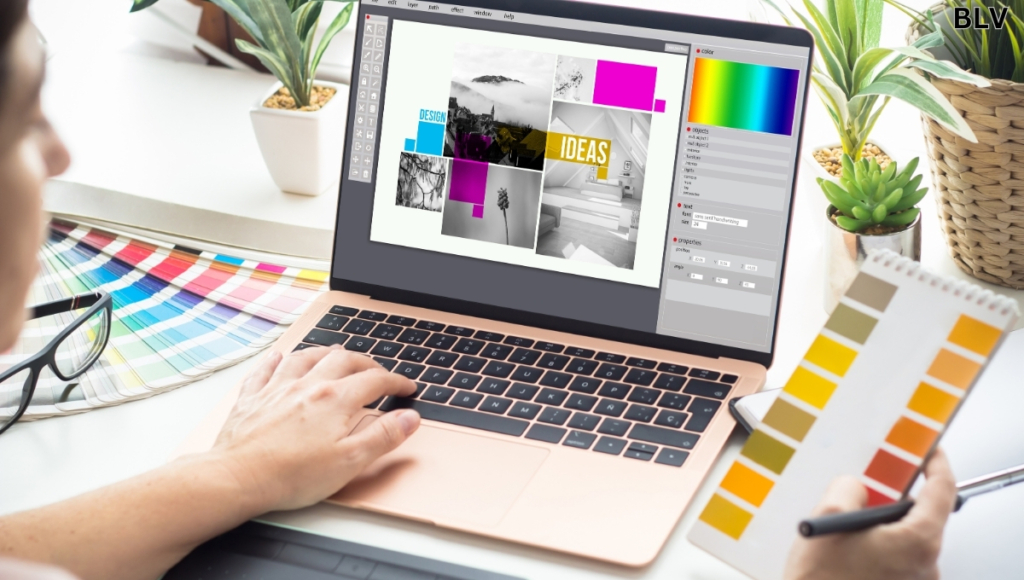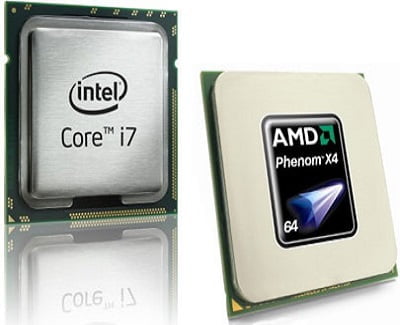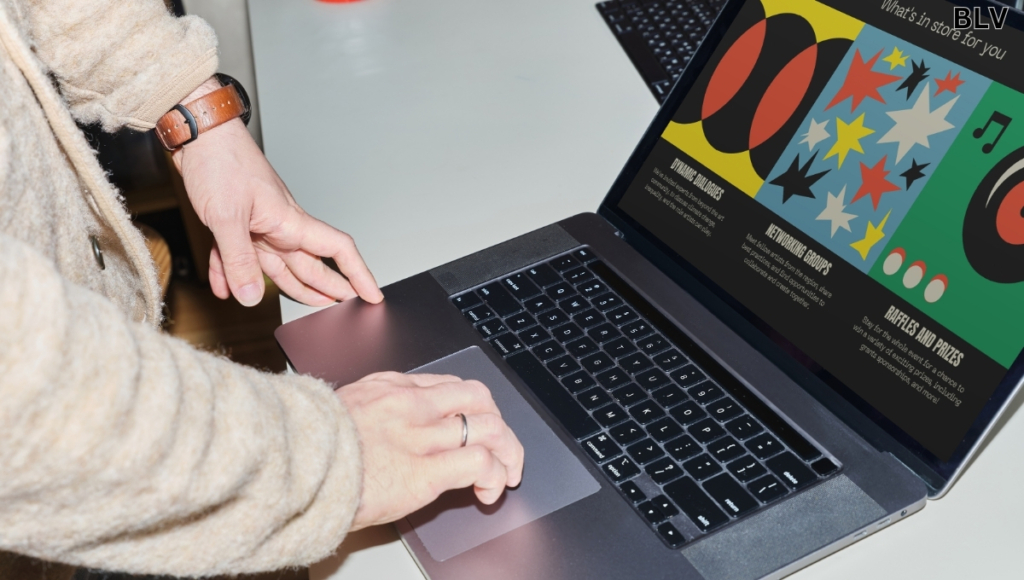
Choosing the best laptop for graphic design is a difficult task that is distinct from selecting a laptop for general usage or gaming.
Laptops for graphic design should be lightweight, portable, and capable of doing complex tasks.
The first concern is which laptop is most suited for graphic design. Consider the type of job you perform and your budget before conducting research and moving on with the decision-making process.
If you’re going to be working with sophisticated 3D models, you will need to meet all of the criteria. If the majority of your work is two-dimensional, you may fall into the mid-to-low range.
How to Select the Most Appropriate Laptop for Graphic Design?
Laptops for graphic design

The operating system, CPU, memory (RAM), display type and size, storage drive, and color accuracy are the most critical laptop specifications for graphic design.
A decent laptop is more than simply a fast computer. While speed is necessary to execute your programs, other aspects to consider include whether to use a Mac or a PC, the amount of RAM and storage installed, the size of the display, and color accuracy.
It would be best if you struck an appropriate balance in your laptop usage. Allow us to begin!
Comparison between the Macintosh and the Personal Computer
Choosing a PC or a Mac is the first step. Even graphic design software is often developed for both the iOS® and Microsoft® Windows® platforms.
So naturally, you’ll want to ensure that your files are compatible with the operating system and software used by the firm with whom you’re collaborating.
Numerous benefits exist for Mac. To begin, their monitors are frequently quite accurate in terms of color and display quality. This is becoming less true, though, as PCs become more graphically capable.
PC benefits include the capacity to run more broad applications, which may be important depending on whether you want to use your laptop for business or personal purposes.
In addition, Apple has been phasing out connectors on its smartphones in recent years.
It gives the items a clean, streamlined appearance but might be inconvenient when connecting several accessories.
Finally, compared to Macs, PCs are more upgradeable in terms of configuration and components.
This capability enables you to change a single outmoded or malfunctioning component of your laptop without having to replace the complete machine.
CPU for Graphic Design

The CPU or central processing unit controls computers. To design graphics, you need a CPU with high processing power, as complicated design software requires a fast, powerful processor.
Although the leading manufacturers vary frequently, graphic design requires a quad-core or extreme series CPU.
Along with the CPU, it’s critical to consider the graphical capability of the computer. A computer can be equipped with either an integrated graphics chip or a dedicated graphics card.
Historically, integrated graphics circuits were limited to displaying spreadsheets and online sites. Integrated graphics chips, on the other hand, have made significant advancements in the last several years.
Unless you often work in 3D, an integrated processor is generally sufficient to operate the majority of graphic design tools. You are saving money by using an integrated graphics chip rather than a standalone graphics card.
If your budget allows it or you frequently work with complicated programs with a lot of textures, you’ll need to seek the best laptop with a dedicated graphics card.
Memory for Graphic Design Laptop

Memory or RAM is where the computer stores data that it needs to access on the fly, such as the contents of the file you’re now working on.
If you frequently work with numerous apps open or with really big files, you will want more RAM to ensure seamless switching between applications and scrolling through complicated files.
Make sure that your laptop has as much RAM as possible. If the setup does not have enough RAM to meet your requirements, more memory may be readily purchased and installed.

Disk Storage for Graphic Design Laptop
Storage drives may be hard disk drives (HDDs) or solid-state drives (SSDs). Although hard drives are more affordable and have a larger capacity, they might cause issues with laptops.
Solid-state drives are more compact, faster, and more durable than conventional hard drives. Although the majority of laptops ship with solid-state disks, those that do not can be updated.
Size and kind of display for Graphic Design Laptop

Due to the visual nature of graphic design, you’ll want to invest in the greatest monitor you can buy. A 13-inch monitor, in general, is insufficient for graphic design work. At the very least, 15 inches should be your target.
While 17 inches is preferable for work, it may be difficult to transport. Additionally, you’ll require a screen with a high resolution (Apple refers to it as Retina HD®).
These displays include a higher pixel density, which allows for greater detail to be seen. A minimum resolution of 1920×1080 pixels is required for effective design.
Numerous laptops now include the ability to utilize the display as a touchscreen. Several of these are also tablet-compatible.
You’ll need a touchscreen if you want to utilize your laptop as a tablet. Otherwise, some users may have difficulty handling the touchscreen, particularly when using fingerprints.
Convertible laptops are becoming increasingly popular. If you wish to sketch or utilize a different input device for your ideas, a tablet may be an efficient option.
However, if you never need to do so, the additional price may not be justified.
If you do decide to utilize a pen as an additional input device, take some time to choose one that suits your preferences. This may affect the laptop you choose to purchase.
Accuracy of Color for Graphic Design Laptops

Additionally, color accuracy and a broad color palette are critical characteristics of the monitor. Generally, you want to verify that the monitor you’re using has a minimum of 100% Adobe® RGB.
If color reproduction is not a priority, you can get away with a monitor that displays 100% sRGB. Color accuracy is often evaluated in terms of Delta-E, a value that indicates how distant a monitor is from perfect accuracy; as a result, a lower value is preferable.
Consider purchasing a monitor with a Delta-E rating of less than 5.
Naturally, Delta-E cannot be regarded in isolation; it must be seen in conjunction with the color palette. A monitor with a limited color palette will have a lower Delta-E score since there are fewer colors to get correctly.
Conclusion on How to Choose the Best Laptop for Graphic Design
Therefore, which laptop is ideal for graphic design? To summarize, it relies on your design aesthetic, your financial constraints, and the apps you run. There are several excellent laptops for graphic design; the key is to pick one that is a good fit for you.
Read more: How to clean your laptop screen and keyboard

![9 Best Laptops For Cricut Explore Air, Air 2 in April 2024 [Expert Recommended] 15 Best Laptops for Cricut Explore Air, Air 2](https://bestlaptopsventure.com/wp-content/uploads/2024/02/best-laptops-for-cricut-explore-air-air-2-maker-1.jpg)
![9 Best Drawing Tablets for Tattoo Artists in April 2024 [Expert Recommended] 16 Best Drawing Tablets for Tattoo Artists](https://bestlaptopsventure.com/wp-content/uploads/2024/02/best-drawing-tablets-for-tattoo-artists-1.jpg)
![9 Best Laptop For Silhouette Portrait in April 2024 [Expert Recommended] 17 Best Laptop for Silhouette Portrait](https://bestlaptopsventure.com/wp-content/uploads/2024/02/Best-Laptops-for-Silhouette-Portrait.jpg)
![9 Best Laptops with MX150 Graphics in April 2024 [Expert Recommended] 18 Best Laptops with MX150 Graphics](https://bestlaptopsventure.com/wp-content/uploads/2024/02/best-laptops-with-mx150-2.jpg)


![9 Best Gaming Laptops Under $1200 in April 2024 [Expert Recommended] 21 Best Gaming Laptops Under $1200](https://bestlaptopsventure.com/wp-content/uploads/2024/02/best-gaming-laptops-under-1200.jpg)

![9 Best Laptops for Cricut Design Space in April 2024 [Expert Recommended] 23 Best Laptops for Cricut Design Space](https://bestlaptopsventure.com/wp-content/uploads/2024/02/best-laptops-for-cricut-design-space-1.jpg)
